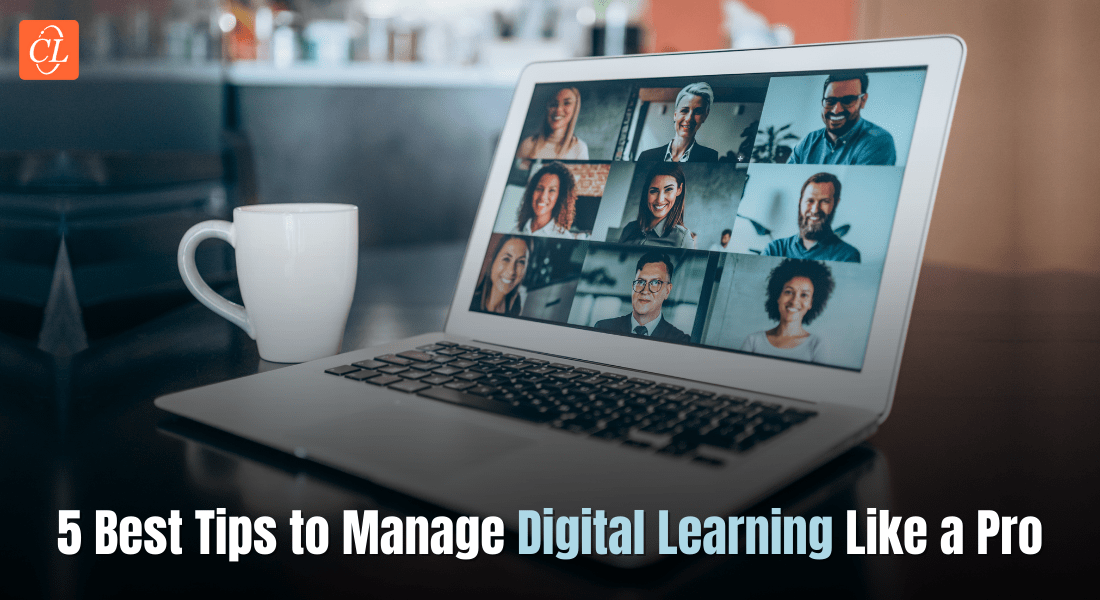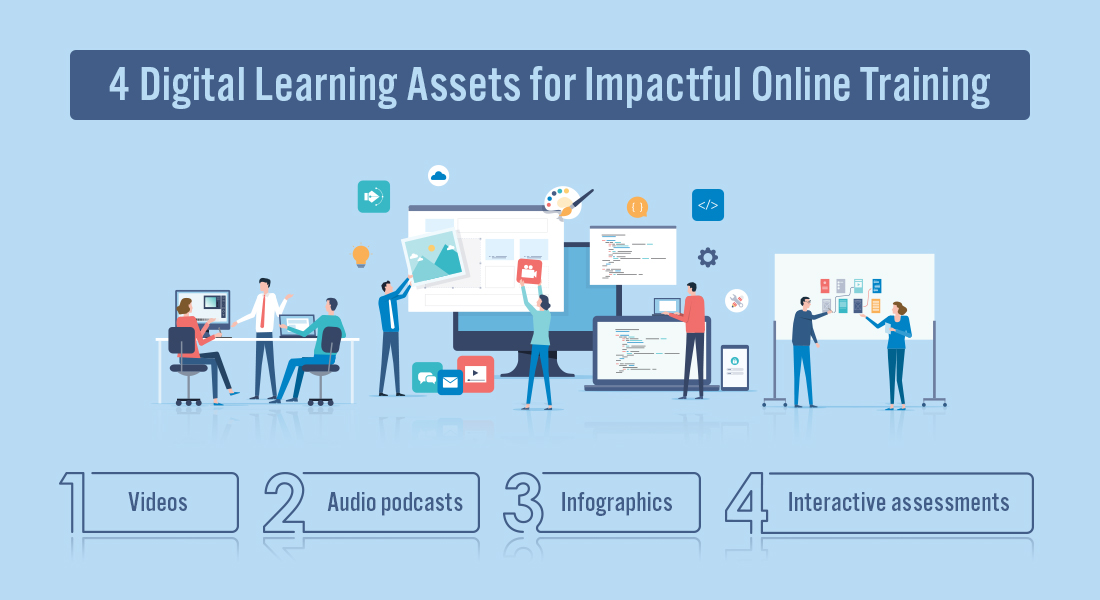5 Amazing Tips to Manage Digital Learning for Corporate Training

Digital learning is one of the most important trends in corporate training. The current generation of employees is accustomed to getting information at their fingertips, and they expect that same level of responsiveness from their employers. However, many companies struggle with delivering digital learning in a way that meets the needs of both employees and organizations.
Manage Digital Learning Like A Pro!
Here are the 5 best tips to help you out:
- Make sure your learners know how to use the system
- Provide support for learners when needed
- Keep up-to-date with new technologies
- Find ways to make sure everyone is achieving their learning objectives
- Breaking up the training sessions into smaller durations over multiple days
In this article, we will look at the 5 amazing tips for managing eLearning digital learning for your corporate training and some other avenues included within the process to help you get started.
What is Digital Learning?
Digital learning is a way to deliver training through digital platforms. It can be used for any kind of learning, including integration with technology. The best part about digital learning is that it allows users to take courses on their own time schedule. You don’t have to commit several hours a week—you can take things at your own pace and fit them into your busy schedule as needed.
Additionally, digital learning can incorporate multiple tools in one place to improve the learning process and make it more comprehensive.
Why Should Corporations Invest in it?
As more and more employees become accustomed to digital training, corporations can easily leverage this trend and save on costs.
- By making use of digital learning, companies are able to cut down on the number of people they need to hire for training purposes. This frees up resources that can be used in other areas such as product development or customer service.
- Digital learning also makes it easy for employees to access relevant information at any time or place.
- If an employee is unable to make it into a meeting on time due to traffic or other reasons, he/she will still be able to access the same information through an app or web portal.
- Digital learning makes sure that every employee has access to all relevant training material so that no one misses out on important details which could affect their performance at work later down the road.
→ Click here to know if your training material is ready for eLearning!
Types of Digital Learning
There are many different types of digital learning. Here we will cover the most common:
- eLearning – This refers to any type of learning that is delivered via computer-based media using technology like computers or mobile devices. The term “eLearning” was coined at a time when online training meant delivering course content exclusively through emails. Rapid eLearning is a form of digital learning that focuses on quick learning and the adoption of learning material. The process is usually faster and comprises small courses.
- Blended Learning – Blended learning offers you a perfect combination of the online and offline modes of learning. It leverages technology to ensure accessibility of training material, and flexibility and convenience to the learners as well as the facilitators. Moreover, blended learning incorporates the in-person mode of training that helps in clarifying doubts and maintains the interaction part. You can use various formats like self-paced learning, live format, social learning, etc., to augment the efficiency of your corporate training.
- Social Learning – This involves collaboration between learners through social media channels such as blogs and forums. Hence, they can share resources freely with each other and improve their skills faster than before (nonlinear learning).
- MOOCs – Massive open online courses are free classes offered by corporates around the world that allow anyone anywhere to access learning material.
- Game-based Learning – Game-based learning is increasingly being used in the context of corporate training as a way to enhance employee engagement and improve learning outcomes. By using games as a training tool, companies can create immersive and interactive experiences that allow employees to practice and apply their skills. Moreover, game-based learning provides immediate feedback, allowing learners to identify areas where they need to improve and adjust their approach accordingly.
- Virtual reality – Devices like Oculus Rift allow users to wear special goggles equipped with head-tracking sensors so they feel present inside virtual environments created by computer programs called engines. These could include simulations where trainees interact directly with virtual characters or just walk around in a simulated environment and work through scenarios. Some of the examples where you can leverage virtual reality include training simulations for pilots, surgeons, firefighters, and other emergency responders who need to learn how to respond quickly in high-stress situations.
Now that you know about various digital learning formats, are you curious to know what’s next?
Well, we’re excited to share the next step with you. It’s understanding where and how to make all these training courses available to your learners. And the answer is — via a Learning Management System (LMS).
An LMS is a type of software that is used to manage all stages of the training process from planning, designing, and delivering courses. It typically provides capabilities for course authoring, tracking learner progress, managing attendance, and serving as an integrated platform for eLearning authoring tools such as SCORM or HTML5/JavaScript-based SCORM clones.
Tips to Manage Digital Learning for Corporate Training
Digital learning has become an important part of corporate training, and it’s a trend that’s only going to continue. But with all the benefits that come with digital learning, it can also present some challenges. Here are five tips for managing digital learning during corporate training:
- Make sure your learners know how to use the system before they start their courses. It’s not enough to just say “click this button” and then leave them on their own—make sure they know how to navigate through the system and access all of its features.
- Provide support for learners who are struggling to learn on their own or who aren’t getting enough help from coworkers. This may mean offering one-on-one tutoring sessions or just checking in regularly to see how things are going.
- Keep up-to-date with new technologies as they become available so that you can offer your learners the best possible experience using them in class or at home!
- Find ways to make sure everyone is achieving their learning objectives out of the time spent learning digitally. This could mean creating surveys at the end of each session, holding regular check-ins via email or text message (and responding promptly!).
- According to one study by the American Psychological Association, people remember only 20% of what they learn after two hours of training. So, if you’re spending more than two hours teaching or demonstrating something, consider breaking it up into smaller durations over multiple days—or even weeks! You’ll get more out of each session, and your trainees will have more time to practice what they’ve learned before moving on.
To Sum It Up!
Digital learning is the future of corporate training. It’s a cost-effective and efficient way to train employees all over the world, in real-time or remotely. It can be used to effectively train employees on the job. Digital learning is a great option for corporations to invest in. It offers many benefits to both employees and the company itself. It also allows companies to save costs on travel and accommodation, which means more money can be spent on other things that are beneficial for the business. The tips outlined above should help you get started with digital learning at your workplace. Check out these effective instructional design strategies to develop impressive eLearning courses.



![How Multiple Industries Can Utilize Digital Learning for Technical Training [Video]](https://blog.commlabindia.com/hubfs/digital-learning-multiple-industries-video.jpg)

